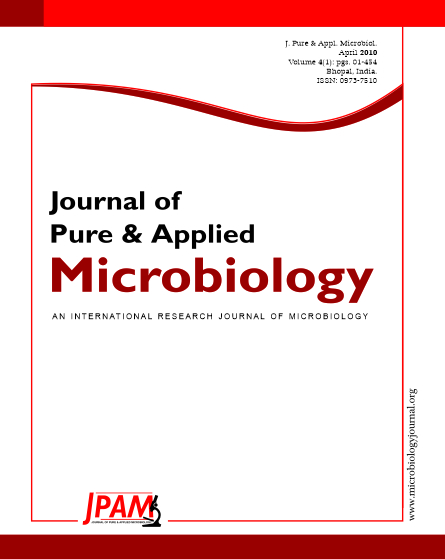Microbial diversity constitutes the most extraordinary reservoir of life in the biosphere that we have only just begun to explore and understand. In this research work, microbial diversity of three tropical scented flowers Rose, Jasmine and Marigold were studied. Representative samples of flowers were collected aseptically from various sites of Bhubaneswar of district Khurda, Orissa during the period from the mid of February to July 2007. Maximum possible number of culturable bacteria, fungi and yeasts were obtained from three stages of flowers and a gradual pattern in the density and diversity of microbes was observed. A total of 71 bacterial strains were obtained from all the three flowers and were categorized into 17 different genera as per their biochemical characterization. Grams reaction of these isolates indicates 42 were Gram -ve rods and 29 were Gram +ve, of which 19 were bacilli and 10 cocci respectively. The predominant bacteria isolated includes Bacillus sphaericus, Bacillus cereus in Jasmine, Bacillus lentimorbus, Serratia plymuthica in marigold and species of Flavobacterium, Xanthomonas in Rose flowers. Acetobacter aceti and E.coli were isolated from all the flowers. Pigmented bacteria like Serratia plymuthica and Serratia marsescens have been isolated from the marigold during the course of study. Curvullaria sp and Candida sp. was isolated from Rose, however only a Penicillium sp was isolated from Marigold whereas no fungi or yeast was isolated from Jasmine. In this study the presence of microflora has been elucidated but their significance and the impact on the respective flowers is yet to be revealed.
Culturable bacteria, Saccharolytic, Pigmented microorganisms
© The Author(s) 2010. Open Access. This article is distributed under the terms of the Creative Commons Attribution 4.0 International License which permits unrestricted use, sharing, distribution, and reproduction in any medium, provided you give appropriate credit to the original author(s) and the source, provide a link to the Creative Commons license, and indicate if changes were made.


